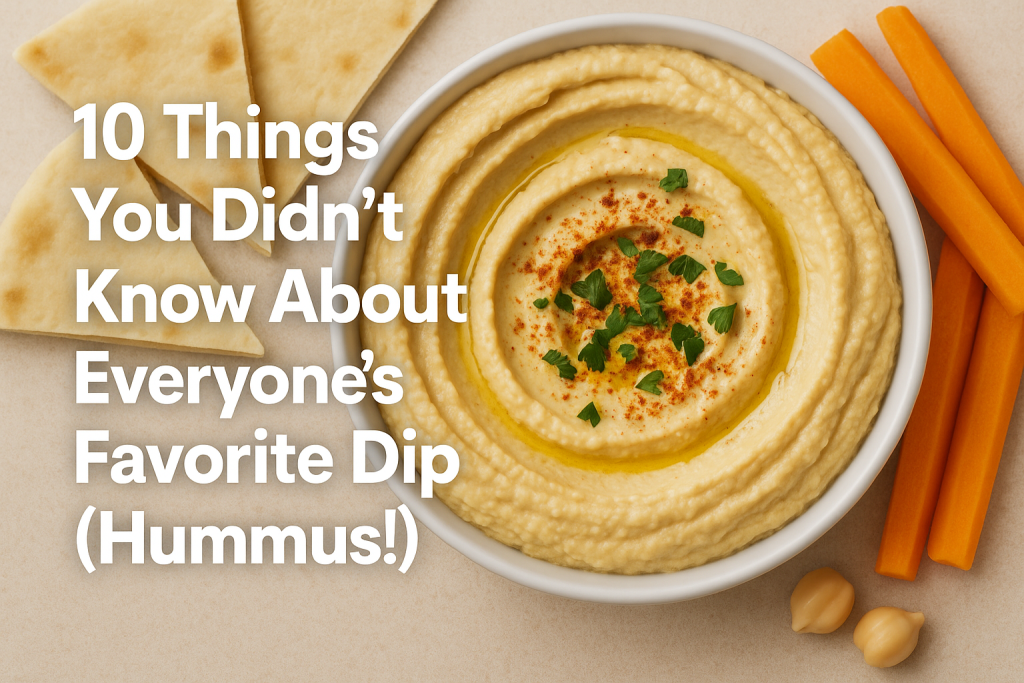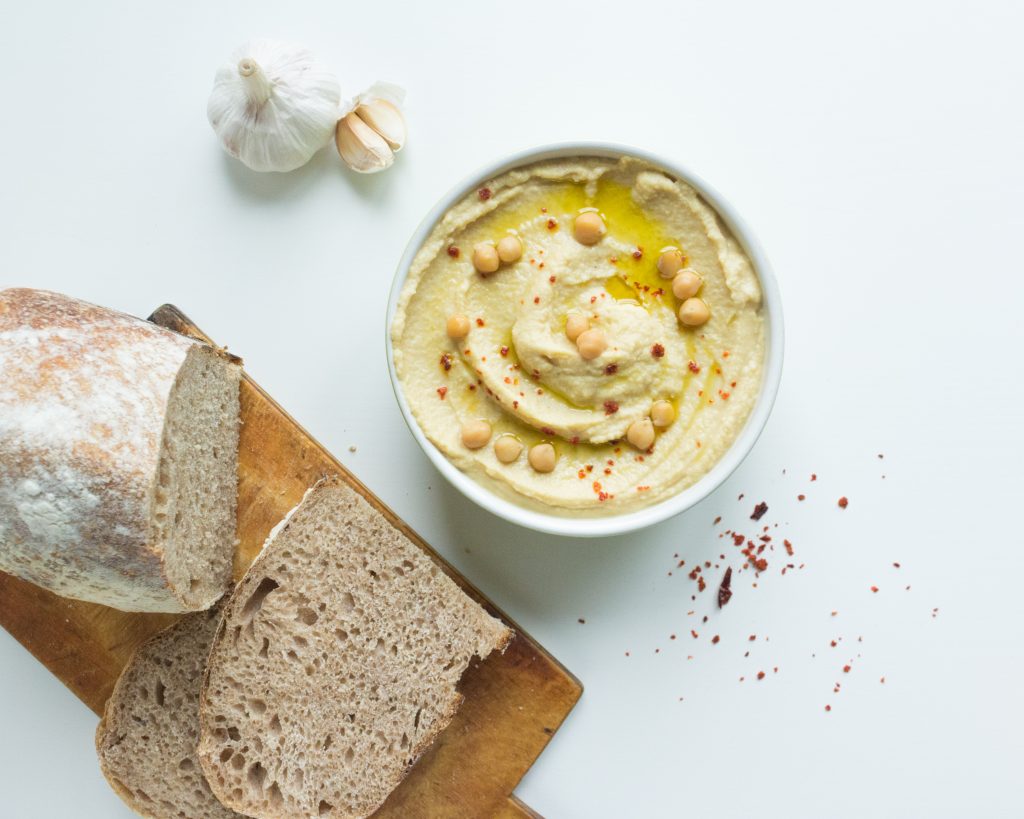
20 Nov 10 Things You Didn’t Know About Everyone’s Favorite Dip (Hummus!)
Why Hummus Is Everyone’s Favorite Dip
Creamy, garlicky and endlessly scoopable, hummus has gone from Middle Eastern staple to global superstar. It shows up on mezze platters, in lunchboxes, on café menus—and yes, it even has a starring role alongside Armenian pizza at Mamajoun in Toronto.
But beyond being delicious, hummus is packed with history, health benefits and fun facts most people never hear about. Here are 10 things you probably didn’t know about this beloved dip—updated for 2025, with what we now know from nutrition research and food trends.
1. Hummus Has Medieval Street Cred
Hummus is not a modern health-food trend; it’s been around for centuries.
-
Food historians trace hummus-like chickpea dips back to 13th-century Arabic cookbooks from Egypt and Syria, where recipes combined mashed chickpeas with tahini, vinegar or lemon, herbs and spices.
-
The word hummus itself comes from the Arabic word for chickpeas.
So when you’re dipping warm pita into hummus at Mamajoun, you’re taking part in a food tradition that’s been evolving for roughly 700+ years.
2. A Little Scoop Packs a Lot of Nutrition
Hummus may look like a simple dip, but it’s surprisingly nutrient-dense.
A typical 2-tablespoon (30 g) serving of classic hummus provides roughly:
-
~80 calories
-
About 2.5 g protein
-
Around 2 g fiber
-
Healthy fats from olive oil and sesame (tahini)
-
Minerals like magnesium, iron, zinc and folate
That combo of fiber + plant protein + healthy fats is why dietitians keep pointing to hummus as a smart snack for steady energy, better blood sugar control, and longer-lasting fullness.
3. It’s a Mediterranean-Diet All-Star
Hummus fits perfectly into the modern Mediterranean diet, which focuses on fruits, vegetables, legumes, whole grains, nuts, seeds and olive oil.
-
Legumes (like chickpeas) are now highlighted by dietitians as the #1 plant protein to eat more of on a Mediterranean-style diet, thanks to their protein, fiber and micronutrients.
-
Recent research suggests that diets that replace some animal products with more whole plant foods—like chickpeas and tahini—may further boost the health benefits of a Mediterranean pattern.
So that scoop of hummus beside your lahmajoun isn’t just tasty—it’s right in line with one of the most respected eating patterns in the world.
4. The Global Hummus Market Is Exploding
You’re not imagining it—hummus is everywhere now.
Market reports estimate the global hummus market was worth around $3.7–6.1 billion USD in 2023–2024, depending on methodology, and is projected to roughly double by the early 2030s.
What’s fueling the growth?
-
Rising interest in plant-based eating
-
Demand for high-protein, convenient snacks
-
Growing popularity of Middle Eastern and Mediterranean cuisine worldwide
In other words: hummus has officially gone from “niche dip” to global big deal.
5. Chickpeas May Help Lower Cholesterol (Newer Data)
We’ve long known that chickpeas are good for you, but recent work is getting more specific.
-
A study presented at the NUTRITION 2025 conference found that eating chickpeas daily helped lower cholesterol and inflammatory markers, especially in people with pre-diabetes.
-
Reviews of legume-rich diets show improvements in heart health, blood lipids and inflammation over time.
That means your hummus isn’t just “better than mayo” as a spread—it may actively support heart health and metabolic health when it’s part of a balanced diet.
6. Not All Hummus Is Created Equal
Here’s something many people miss: the healthiness of hummus depends a lot on what goes into it.
-
Traditional hummus uses olive oil and tahini, which provide heart-friendly unsaturated fats.
-
Some mass-produced versions swap olive oil for cheaper refined oils and add more salt and stabilizers to extend shelf life.
When you’re choosing hummus:
-
Check the oil: extra-virgin olive oil is a good sign.
-
Keep an eye on sodium if you’re watching blood pressure.
-
Short ingredient list = usually closer to the traditional, home-made style.
A house-made hummus like you’d get fresh at a place like Mamajoun Pizzeria in Toronto is often closer to the “real thing” than an ultra-processed tub.
7. There’s Way More Than One Kind of Hummus
Most grocery-store tubs are just one style: smooth hummus b’tahini. But if you travel through the Levant (or dive into more specialized food writing), you’ll find all kinds of variations:
-
Msabbaha – a looser dish of warm whole chickpeas “swimming” in tahini sauce.
-
Hummus fatteh – a layered dish with toasted pita, warm chickpeas, tahini, sometimes meat and pine nuts.
-
Regional twists with extra toppings: spiced lamb, roasted peppers, herbs, pickles and more.
So when you see creative hummus bowls on modern menus, they’re not “breaking the rules”—they’re tapping into a long tradition of variations.
8. Hummus Is Ridiculously Versatile (Yes, Even on Pizza)
If you only use hummus as a carrot-stick dip, you’re missing out. Its creamy texture makes it a natural stand-in for sauces, spreads and dressings:
-
On pizza: use hummus as a base instead of tomato sauce, then add grilled veggies, olives and fresh herbs. (Mamajoun already leans into creative Armenian-Mediterranean toppings, so hummus pairs right in with that style.)
-
As a sandwich or wrap spread instead of mayo
-
Thinned with lemon and water as a salad dressing
-
On warm flatbreads with za’atar, sumac and fresh vegetables
-
As a side with Armenian dishes like lahmajoun or eetch, or with dips like baba ganoush and muhammara for a full mezze spread.
In a place like Toronto—where diners are used to mashups and globally inspired menus—this kind of versatility is a big reason hummus stays trending.
9. It’s One of the More Planet-Friendly Dips
Hummus isn’t just kind to your body—it’s relatively kind to the planet.
-
Chickpeas generally need less water and fertilizer than many animal-derived protein sources.
-
Legume crops can help improve soil health and are an important part of more sustainable, plant-forward diets.
Several writers and nutrition experts now highlight hummus as a sustainable snack choice, especially when paired with seasonal vegetables instead of heavily processed chips.
10. Toronto Has Quietly Become a Hummus City
Toronto’s food scene is incredibly diverse, and hummus has become a staple on menus all over the city.
-
The city has a thriving Armenian and Middle Eastern community, and local guides regularly highlight Armenian restaurants as must-visit spots.
-
Restaurant listings now track where to get the best hummus in Toronto, reflecting how mainstream (and competitive!) this once-niche dip has become.
-
Mamajoun Pizzeria stands out by pairing classic Armenian flatbreads and pizzas with Mediterranean sides and dips like hummus and baba ganoush—exactly the kind of cross-cultural comfort food Toronto loves.
So when you’re scooping up hummus at Mamajoun, you’re tasting both deep tradition and very current Toronto food culture in one bite.
Quick Hummus FAQ
Is hummus actually healthy?
Yes. In moderation (2–4 tablespoons), hummus offers fiber, plant protein and unsaturated fats that support heart health, digestion, blood sugar control and weight management, according to multiple recent reviews.
Is hummus good for people with dietary restrictions?
Classic hummus is naturally gluten-free, dairy-free and nut-free, which makes it suitable for many people with common allergies or intolerances—though anyone with a sesame allergy must avoid tahini.
How much hummus is “too much”?
Because hummus is calorie-dense and chickpeas are high in certain fermentable carbs (FODMAPs), most dietitians suggest enjoying it in moderate portions (a few tablespoons) and paying attention to how your digestion feels.
What should I serve with hummus from Mamajoun?
Try it with lahmajoun, warm pita, pizza crusts, fresh vegetables or Armenian salads and sides to create a balanced, Mediterranean-inspired meal.




